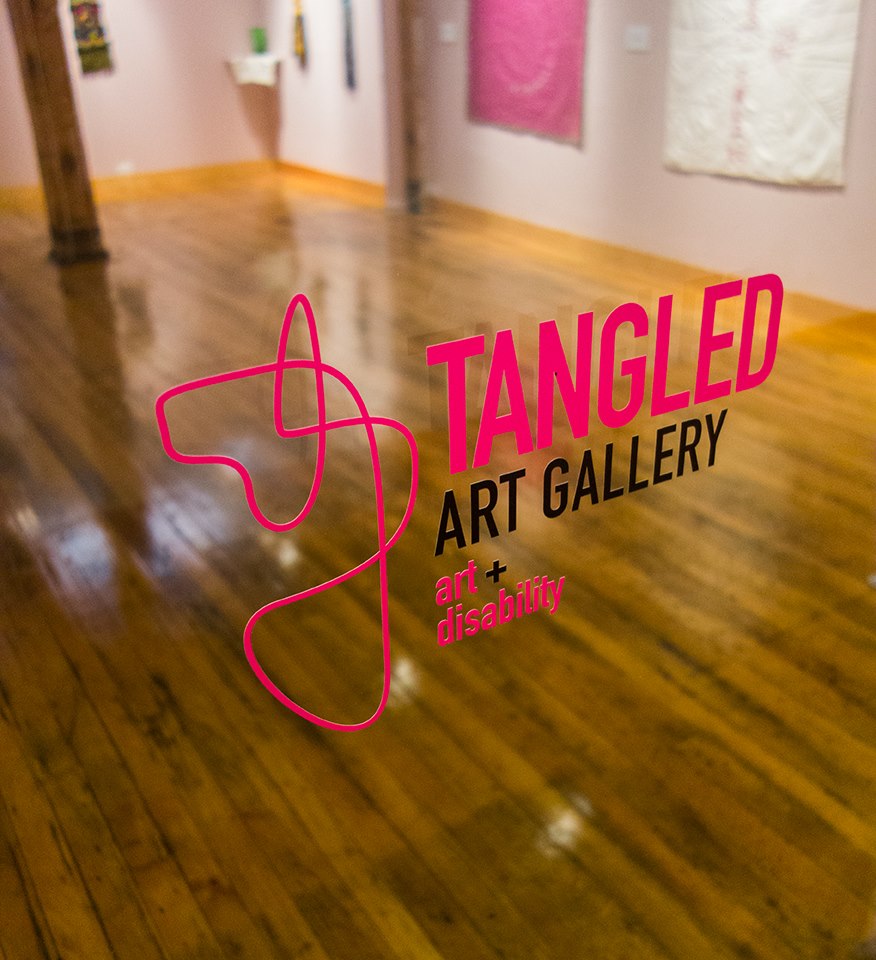
Accessibility for
REAL TIME EVENTS
Exhibitions
Representation in Galleries & Museums
Image: Brick wall with See Me and Hear Me written above the windows.
Overview
When disability is represented in museum or gallery spaces, it is often tokenized or othered, limited to a reflection on lived trauma and something to overcome. Of course, lived experiences inform artwork, and work based around identity is incredibly valid. But when that’s the only frame of reference offered for disability in arts spaces, it becomes problematic.
As Hanan Hazime says in this 2021 Akimbo article opens in new window, “even arts organizations with good intentions often contribute to the essentialization of Mad/disabled folks by only offering opportunities for representation that focus on dispelling stigmas, raising awareness, and sharing narratives of lived experience.” (Akimbo, 2021).
Developing an Understanding
The questions that should always be asked when we see a lack of representation - or only one kind of representation - in the arts is: who is programming, who is chosen to participate, and who is being marketed to?
Accessibility in galleries and museums should be thought of as a shared responsibility as Emily Watlington says, “between artists, curators, and venue directors, rather than an afterthought or the job of museum educators alone.” (Art in America, 2021).
It’s impossible to predict specific access needs, and not all needs can be met by one set of changes alone. For artists, considering how their work is viewed, which vantage points it can be seen from, and offering “access riders” – a list of accessibility needs to show their work - can help with accountability between makers and organizers. For galleries and museums, sharing resources is important - accessibility and design guides can be shared amongst organizations (Art in America, 2021).
Including accessibility in exhibition design is not only ethical and essential, but also acts to expand tired notions of clinical, white walled gallery spaces. Magnus Resch and Stefan Heidenreich ask the art world to “be brave” by not only creating an environment but a new experience where the viewers give meaning to art by allowing them to participate (Artsy, 2019).

Spotlight: Tangled Art + Disability (TAD)
Tangled Art + Disability is redefining how the world experiences art and those who create it. TAD is a not-for-profit art + disability organization dedicated to connecting professional and emerging artists, the arts community and a diverse public through creative passion and artistic excellence.
Tangled Art + Disability is committed to cultivating inclusion and accessibility in the Canadian arts ecology and leads by example in terms of accessible arts programming. Tangled acknowledges the need for both knowledge & resources to support accessible programming and is dedicated to connecting professional and emerging artists, the arts community, and a diverse public through creative passion and artistic excellence. The mission is to support Disabled, d/Deaf, chronically ill, neurodiverse, k/crip, Mad, sick & spoonie artists; to cultivate Disability Arts in Canada; and to increase opportunities for everyone to participate in the arts by:
- Creating partnerships and collaborations that increase opportunities for Disabled artists
- Empowering d/Deaf, Mad, and Disability-identified people to embrace and explore their own creativity
- Developing, showcasing, promoting, and employing Disabled artists
- Publicly showcasing the rich diversity of talent from the Disability Arts community
TAD policies and practices are informed by:
- A responsive principle that relies on the contributions and voices of our community
- A framework that supports the development of disability-identified artists being agents of knowledge, change, leadership, and production
- A community and disability-led practice that sees accessibility consulting formed by our lived experiences of disability and intersectionality
- A role as a catalyst for cultivating disability art, d/Deaf and Mad arts, and inclusion in the arts.
Tangled Art + Disability recognizes that accessibility practices are always changing and shifting by the knowledge and experience of how inclusion is modeled in our communities. Tangled understands that for its goals toward equity and inclusion to be reached, it is necessary to evaluate its policies and practices on an ongoing basis (Tangled Art + Disability, 2024).




